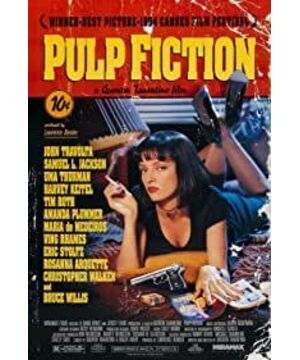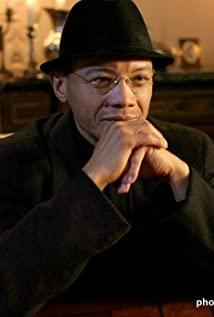As a film and television culture that has increasingly occupied the mainstream of the cultural market, its development is even more a sign of the times, and its post-modernity has become increasingly obvious. In the 1960s, the discourse model of old Hollywood and modernist films declined, and postmodern films began to appear. Some people believe that the postmodern films mentioned in the British and American film critics often refer specifically to certain films that appeared in Hollywood after the 1970s, and have gradually become a film style with global influence, and a number of representative films have appeared. Films such as "The Charm of Bourgeois Prudent" (Louis Bunuel, 1972), "Star Wars" (George Lucas, 1977), "Lola Run" (Germany, 1998), etc. Since the 1990s, postmodern movies have exploded with amazing energy, and their aesthetic style has gradually been accepted. Of course, everyone still has different opinions about postmodern movies. Some people despise postmodern movies, saying that it is a "outright vulgar dictatorship" with "rebelling against the great tradition of human art pursuing the unity of truth, goodness and beauty" as its logical starting point. Some people enthusiastically call it an era of "not far away mythology", and even assert that "post-modern movies have begun to become the mainstream of world cinema". In fact, in the author's opinion, postmodern film is the embodiment of the modern development of film. It has won the attention of the audience with its strong anti-traditional spirit and "novelty" skills. Its success is not sudden, but inherent. The root of aesthetics is the embodiment of postmodern aesthetics.
Postmodern film aesthetics is mainly based on the dissolution and subversion of modernist film aesthetics. The implosion of information in the post-modern media society has created a strong sense of frustration and fracture. Facing the new context, the overall narrative of modernist films has lost the conditions for existence. Postmodern film directors have abandoned the causal-led meticulous rational narrative and pursued fragmented images. Therefore, postmodern movies are both production and game. Time has long been lost and standards have collapsed. The viewing process is a process of free collage. There is no ultimate judgment, only multiple judgments in a relative sense.
In terms of expressive content, modern movies mainly explore people’s inner world, while postmodern movies focus on the narrative of the trivialities of daily life. Therefore, the former focuses on the exploration of depth, while the latter is the digestion of depth. This modern movie reflects a kind of The pursuit of social responsibility has a sense of elites, while postmodern movies cater to the taste of the public more, attracting audiences with popular themes, and are kitsch. But this is exactly the style of post-modern movies. It erases the distinction between the so-called elite and the masses, cancels the so-called serious value pursuit, subverts the traditional distinction standard, and brings breakthroughs in aesthetic experience. In Sontag’s words, “all the boundaries recognized by tradition have therefore been challenged: not only the boundary between “scientific” culture and “literature---art”, or “art” and “non-art” The boundaries between, and also the many established distinctions in the cultural field itself-such as the distinction between form and content, the distinction between superficial and serious, and the distinction between "higher" culture and "lower" culture The distinction (this distinction is most valued by literary intellectuals)". Sontag’s judgment can be described as sharp, pointing out the fundamental characteristics of postmodern movies.
That is, anti-regularization, dissolution of meaning, popularity and playfulness. "Pulp Fiction" (Pulp Fiction) is Quentin Tarantino’s second film work. The success of this film announces that postmodern film has finally become a powerful trend in film at the end of the century. His greatest contribution is The "shallow" post-modern film was made "epic". Pulp fiction refers to the kind of novels with popular content and layout. They were born when Alan Lane in the United Kingdom founded the "Penguin" version of popular literature books in 1935. Such books are often made of recycled paper. Produced after discarded newspapers and books were mixed into pulp, Quentin hinted that his film is a mixture of fragments of many other films and literary works. He made all the hard things, violence, sex, politics, and national wars as easy to swallow as pulp or even tomato sauce. Tarantino made himself a postmodern movie hero with a film like "Pulp Fiction". As the representative of post-modern film aesthetics, "Pulp Fiction" embodies the diverse trends and styles of post-modern films, and has typical significance. Let us take this as an example to interpret its deconstructive narrative and post-modern aesthetic style.
1. The destruction and subversion of artistic rules
Lyotard believes that postmodernity is an attitude of suspicion, distrust and rejection of meta-narrative or grand narrative. Postmodern film discourse "does not believe in meta-narratives" and "fights against the whole". It likes combination, patchwork, accidental or fragmented phenomena, causing fragments or parts to replace the whole. Therefore, postmodern culture "is not a purely creative culture, but a quotation culture, a culture of'intertextuality'." Postmodern film "is also a culture of images and representations without the possibility of'potential'. Obtain the power of interpretation from the interaction of other images, other representations, and intertextuality."
In "Pulp Fiction", the traditional narrative center, coherent narrative is no longer there, and what is left is only fragments and splicing. From the perspective of the structure of the play, Quentin discarded the traditional Hollywood style and subverted the linear concept of time and space in traditional movies. Instead, the narrative of the whole film was processed into a "circular structure" that echoed from the beginning to the end with the method of separation of viewpoints. The postmodern author deliberately violated the linear order. The story's'plot order is reversed, regenerating from the end to the beginning, implying an endless cycle of characteristics'". This is the case here, the beginning is the end, and the end is the beginning. He disassembled the two boys’ plan to robbery and was taught by the killer Jules and placed it at the beginning and the end of the film. Not only that, but he also disassembled several other stories, so that there was a scene where the dead came back to life. Don't make any explanations. The audience's immersive experience is like seeing a "fake" movie, a "stall literature" in which the beginning, end, or some parts of the middle are accidentally torn off. The understanding of the plot of the film requires the audience to combine according to their own ideas. It can be seen that postmodern movies are both production and game. Time has long been lost and standards have collapsed. The viewing process is a process of free collage. There is no ultimate judgment, only multiple judgments in a relative sense.
At the same time, we can see the vivid "intertextuality" color in this movie. The indifferent attitude towards violence and evil in film noir and tough guy novels, the character design and layout of bandit films, the fierce action of Hong Kong movies, the miracle of magical realism and the confusion between reality, make the postmodern splicing of "Pulp Fiction" achieved. The extent of the carnival. When rescuing Mia, the mistress of the gang boss, the plot of drawing a shot on her chest came from Marquez’s "One Hundred Years of Solitude". Before committing suicide, Colonel Aureliano ordered the doctor to find one on his chest to make him die happy and accurate. The mark. Tarantino himself said: I copy every play, copy it and then mix them together... I copy it everywhere, and great artists always copy it.
Accidental factors also play an important role in this movie. It changes the narrative process and also changes the fate of people. What happened to the people who came out of the toilet (Vincent had two major incidents when he came out of the toilet, one was a robbery in a restaurant, and one was shot and killed by Butch; at the beginning of the movie, when Vincent and Jules were on duty I didn’t know that someone was hiding in the toilet and was almost killed); Butch forgot his watch when he ran away, which resulted in an encounter with the boss Masha, which caused an encounter; as well as Mia’s drug overdose and Jules’s miracle ", robberies in restaurants, etc., these are accidents in life, and it is these seemingly accidental events rather than definite causal factors that change the fate of the characters.
2. Popularity and gameplay The
postmodern discourse of victory films is driven by the commercialization of the consumer society because it is in the post-industrial society, thus reflecting the color of commerciality, gameplay, and popularization. Jameson pointed out that the old (essentially high-modernist) boundary between high-level culture and so-called popular culture or commercial culture has been cancelled, and a new type of text has emerged that floods the form, category, and content of the cultural industry. Bourdieu believes that film has freed itself from the shackles of classic art and has become popular culture or postmodern culture, and has become cultural capital. The purity of aesthetics and the self-discipline of art have been impacted. The ivory tower of pure aesthetics has collapsed under the impact of popular art and its aesthetics, followed by the appearance of popular aesthetics, and increasingly gains its own aesthetic legitimacy.
Use popular themes to attract the audience, flatten the depth, and flatten everything. This is where the serious attitude of postmodernism differs from modernism. The result is to give the audience leisure, fashion, relaxation, and surprise without earning tears. Violence, crime, sex and other subjects generally regarded as vulgar are the themes of postmodern movies. Especially in the violent style, Tarantino is unique. Violence has always been the unshakable theme of Quentin's works, and has formed his aesthetics of black violence. Violence is blood, cold, and games, without any moral and political responsibility.
"Pulp Fiction" thoroughly stylized and gamified violence. It makes the audience realize that at this moment, you are watching a movie for entertainment, so Tarantino will turn violence into a joke, sex into a joke, politics into a joke, and history into a joke. It does not ask about meaning, does not reflect, does not touch politics, and does not talk about resistance. The passage in the Bible before Jules murdered was not meant to legalize his murder. Similarly, the scene of Mia’s drug overdose did not have the slightest intention of admonishing drug addicts, and even Vincent mistakenly killed “Little” by accident. "Black" has also been treated as a sketch with constant jokes. Vincent and Jules drove a car full of brains and blood around the city. In order not to let the police find out, and at the same time, in order not to add trouble to their friends, they had to within 40 minutes. Cleaning the car is a very technical job, so much so that they had to hire a special problem solving expert from the headquarters to guide them in their work. When two hunky guys finally washed themselves and the car Later, when standing in front of the camera wearing two exaggerated and somewhat funny T-shirts, a scene full of blood and horror was transformed into a humorous sketch, where the popularity and gameplay were vividly expressed. So some people say: "Pulp Fiction has completed the transition of violent movies from modernity to postmodernity, which shows that postmodern violent movies have completely lost the power of social criticism, the depth and the profound connection between the old movies and the real world. It is. No longer carry the meaning of cultural symbols such as national mythology, heroism, social resistance, political indictment, etc., other cultural commitments similar to this have also been taken away, leaving only the image itself." The frequent violent scenes in the film are echoing. Its "circular structure" clearly points out that the occurrence of violence is cyclical and never-ending. "Pulp Fiction" tells us: in life, violence, including forms of war and boxing, is ubiquitous, and there is no justice at all in life and death, right and wrong in front of it.
Although Quentin Tarantino has never talked about postmodernism, he knows its essence. He seems to tell us that life in the 20th century is developing rapidly, speeding and changing without value. No one has immunity. There is no reason and fairness in life or death. Movies are nothing more than trivia and jokes. , Is a "vulgar novel", and this is where the subversive power of postmodern film aesthetics lies.
View more about Pulp Fiction reviews











